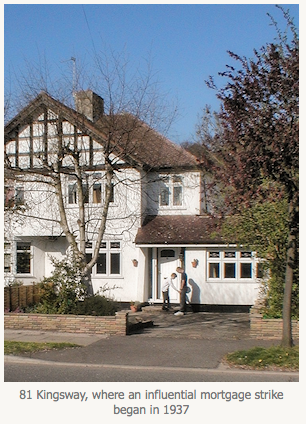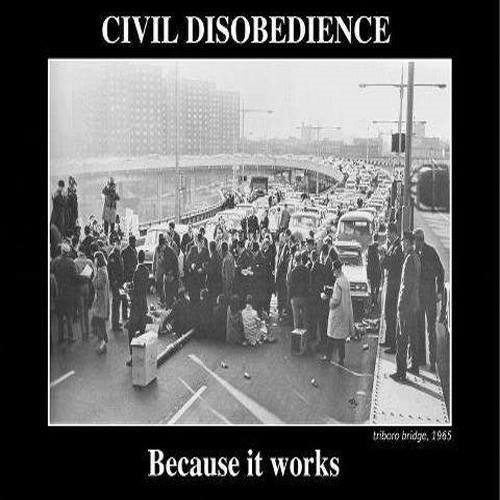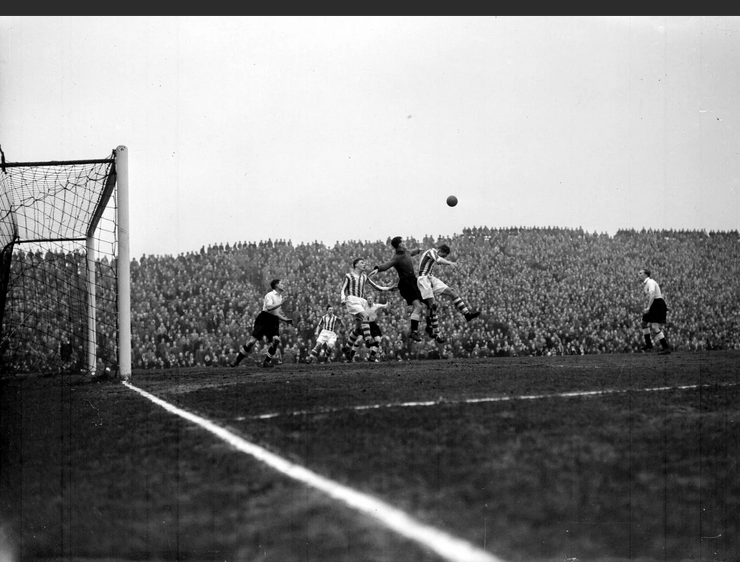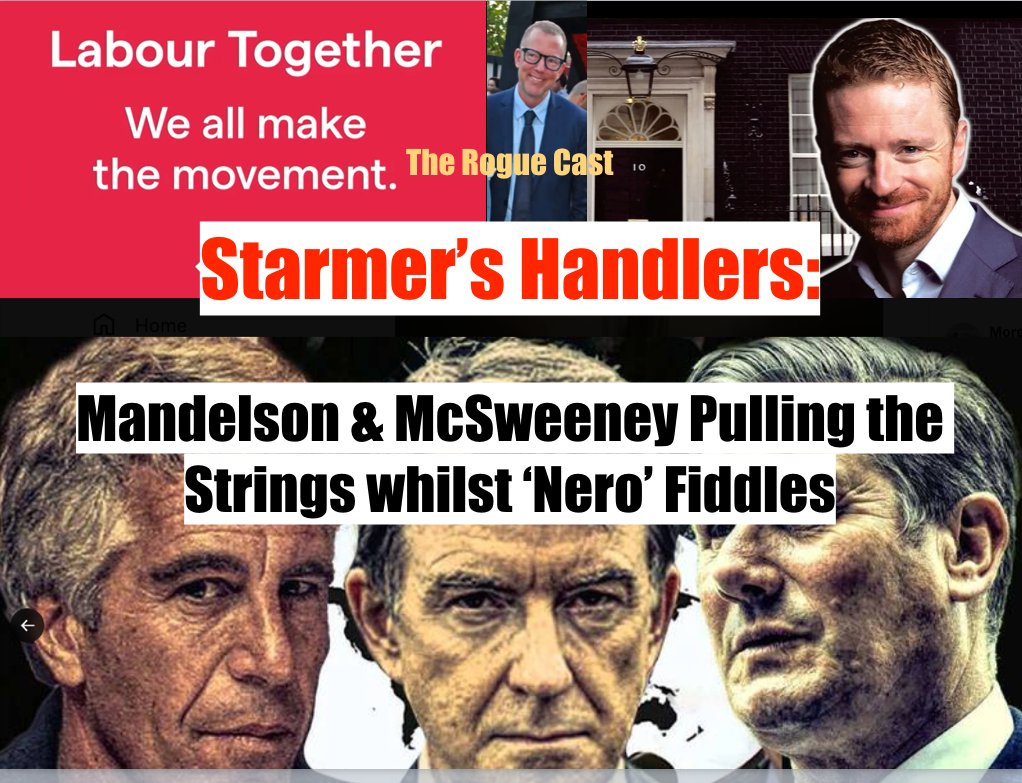THE REDOUBTABLE ELSY BORDERS VS THE BRADFORD BUILDING SOCIETY.
Can pay, won’t pay
So it was for Elsy Borders, the housewife who became a folk hero in the organisation of mortgage strikes in the 1930s.
This is an inspirational tale of two mortgagors, Jim and Elsy Borders, who achieved national acclaim and the support of hundreds of thousands of mortgagors who, inspired by their actions, went on Mortgage Strikes vs the Building Societies in Britain in the 1930s to the outbreak of WW2 over the banksters/building societies’ fraudulent misrepresentations.
The history of the Borders and their battle vs the Bradford Equitable Building Society may well be an example to all those currently engaged in the struggle to end the treachery of the biggest pyramid scheme of them all, namely the securitised loan scam aka The Great British Mortgage Swindle. It is quite possibly an example which can be used to inspire the brow-beaten ‘mortgagors’ of these shores to draw that line in the sand and declare they too are on a mortgage strike.
It is also significant in the part it plays in establishing the cause of action for the Tort of Deceit:
It is today taught in legal training that it was held in Bradford v Borders (1941) that the maker of a false statement must have intended for the claimant to have relied upon the statement if a tort is to be established. Moreover, the main difference between suing in deceit and in negligence was addressed by reference to the caps on remoteness of damages. In deceit, to mark the law’s disapproval of fraud, the defendant (in Elsy’s case the building society) is liable for all losses flowing directly from the tort, whether they were foreseeable or not.
The Fraud on the Court Claim as exemplified here is founded on this very principle – namely, the unscrupulous lawyers, who make fraudulent possession claims on behalf of the ‘front’ banks when the mortgages over the properties/lands in question have been sold on. These fake banks, like the Bradford and Bingley, for instance, are not the holder-in-due course of the mortgage and thus have no right to initiate such claims.
Now, given the deliberate deceits of the banksters and their well-paid lawyers who lie to court and claim their ‘clients’ (who are not in actuality the holders in due course of the mortgage notes, but rather the collectors of moneys for the investors in the mortgage backed securities) it would appear that we may well have grounds for a similar uprising of the people vs the banks… Read this and smile, folks … it is genuinely inspiring and should help all to see just how powerful we are …
“ELSY AND JIM BORDERS ”
“[…] Born around 1900, Elsy Florence Eva was the London housewife who changed the course of legal and political history in the field of owner-occupied housing mortgages. The campaigns around rent control and investment in council housing that the Communist Party was noted for in the 1930s were extended by the Borders to home-owners who went on mortgage strike in protest at shoddy workmanship in the building of new homes.

A Communist Party member, Elsy played a prominent role in all this by taking her building society to court over its failure to ensure good building standards. Many homeowners were deeply concerned over the complicity of the building societies in accepting the low standards of construction from speculative builders and the campaign was successful in contributing to legislative change.
Unlike in the USA, which relied on major state infrastructure projects to get out of the Depression, the 1930’s building boom – along with the rise of new consumer industries – were the initial factors in shifting Britain’s sluggish economy upwards (until rearmament came along). But not all of the new buildings were well-built. Many of the new homes leaked, creaked, and crumbled. Building societies tended to be highly authoritarian towards borrowers and could even be considered beset with corruption and snobbery. A situation tantamount to renting emerged as societies employed weekly collectors of the mortgage to try to prevent mass mortgage default as more and more fairly ordinary working class people with secure jobs turned to mortgage-holding.
In March 1934, Elsy and husband Jim, a London cabby, bought a house on Coney Hall estate, twelve miles from Charing Cross in West Wickham, today firmly in the London Borough of Bromley but then thought of as being beyond and into the green belt of Kent. They moved in with their three-year-old daughter, Pamela, and, having a keen sense of humour, named their home “Insanity”. So, their address became, “Borders of Insanity”, Coney Hall Estate, West Wickham, Kent!! More formally and much later it was to become 81, Kingsway, Coney Hall, West Wickham, Kent.
The Borders purchased the house, which was built by Messrs E. Morrell, through the Bradford Third Equitable Building Society. As a down payment, they paid £37 in cash – a considerable sum – and signed a mortgage for the remaining £693. The building society, in accordance with their usual practice, paid only £650 to the builders, keeping the rest as part of a pool to pay losses from defaulted mortgages.
Hardly were the Borders installed when they noticed cracks in the ceiling, squeaks in the floors. Soon plaster began to fall, dampness oozed through the walls, the roof sagged and leaked. Later, it was stated in court by Jim Borders that “…the house was in a bad condition. The whole front … was damp, and the wallpaper fell off the walls by its own weight. The foundations were narrow and did not look strong enough to support the house. There were cracks in the outer walls and windows in front did not fit. Two of the windows would not shut and had been in that state for at least two years. The ceilings were cracked and the roof leaked. The electric wiring was never safe, and the front of the house was cracked in several places and the eaves were open. The glass on the front door has collapsed, the bath had dropped from its original place, and the fireplace had come away from the walls. The chimneys were defective and the woodwork was infected by a small insect. The party wall did not go up to the full height, and he had shaken hands over it with his next door neighbour. That was all he could think of for the moment, he added.”
While the Borders grumblingly met their monthly four guineas payments, Elsy busied herself helping form first a local and then a national Federation of Tenants’ and Residents’ Association. Some 1,200 residents organised themselves into the Coney Hall District Residents Association and, as a result of the struggle, Elsy Borders later became a leading figure in the FTRA, along with Michael Shapiro (se separate entry) as Secretary.
When, in a blaze of local publicity during 1937, the Borders began withholding mortgage payments until some remedy was provided about the building flaws, this prompted as many as five hundred of her neighbours on the estate to also intentionally defaulting on their payments to building societies. After three months, the Bradford Society brought a claim against Jim and Elsy, seeking repossession of the house on the simple grounds that the Borders were three months in arrears with their mortgage repayments.
In turn, the Borders hit back with a massive compensation claim of £500 to cover the accumulated costs of repairs already effected by the couple over the previous three years, a sum approaching the cost of the whole house. Their claim charged misrepresentation of the value of the house, questioned the legality of holding back part of the cost in a pool, while at the same time charging interest on the full amount, and charged the society that it had lent money on an insufficient security and had “wilfully and fraudulently” misled the couple into believing that the house was built of good materials and in efficient manner.
Unable to afford a lawyer, Elsy Borders spent several months reading law in the London School of Economics, and handled the case herself, winning national fame in the mainstream press as “the housewife Portia – the tenants’ KC”. [KC=King’s Counsel, today a QC, Queen’s Counsel.] The case began on 13 January 1938 and focused the attention of the whole nation upon the plight in which hundreds of thousands of house purchasers had found themselves.
Dubbing Elsy `the modern Portia’ was a nod towards Shakespeare’s play, `Merchant of Venice’ and it was the strength of character that Portia displays on stage that made it a role always highly attractive to many notable actresses. Elsy’s persona in court recalled such memorable stage performances. Portia’s role stresses that, irrespective of its formal legal merits or moral authority, an argument can be won through the employment of eloquence, loopholes and technicalities and the term had often been employed to denote a strong female advocate of sometime uncertain legal arguments. The term was made popular following the 1908 foundation of the New England School of Law, popularly known as the Portia Law School, and a women-only law school. The school’s nick-name was still in general currency until as late as 1969.
For 18 days at the beginning of 1938, the legal battle was fought out in the Chancery Court, which was permanently packed with crowds who came to see the “Portia, the tenants’ KC” in action. Elsy spoke for a stunning eight hours but, despite a great deal of fuss that made it seem as if they had achieved total victory, in fact, the Borders actually won only a part of their case, in so far as the Court’s judgment dismissing both actions gave them clear title to their house, without having to pay any more instalments, but rejected other claims.
The Bradford Building Society’s case failed, Mr Justice Bennett ruled, because it was unable to prove that the mortgage deed it produced as evidence was the one that the Borders had actually signed. But the Borders’ counter-claim failed too, because Elsy couldn’t prove that the building society was responsible for misrepresentation. She appealed, saying the case pitted the purchaser against the jerry-builder, the rogue who throws up a good-looking but poor-quality house and tries to sell it through a building society. Backed by a fighting fund – sympathisers subscribed the significant sum of 10 shillings a head – the Borders’ crusade gathered momentum with a packed public meeting on the Coney Hall estate. Jim Borders warned that their legal struggle might last as long as five years, involving as many as 40 building societies.
Indeed, following the first case, the Federation of Tenants’ and Residents’ Associations prepared writs against 24 “jerry” building societies, including Halifax and Abbey Road, the two biggest. “Portia” Borders now became the heroine for many Britons and aided the movement to found `Tenants’ or Residents’ Defence Leagues’, which were typically led by Communists. As many as 70,000 families were on rent or mortgage strike at one point.
In 1939, on the centenary of the great working class Chartist Convention that demanded reforms such as universal suffrage and annual Parliaments, representatives of the 200,000 members of the booming Federation of Tenants’ and Residents’ Associations met for its first national convention.
Birmingham, the recent scene of a victorious strike by 46,000 families living in a municipal housing, was the convention city. The purpose of the meeting was to weld the scattered defence leagues into a national pressure group with a program of slum clearance, Government rent control, increased legal responsibilities for landlords. Although the Labour Party lawyers’ group, the Haldane Society, supplied the movement with free legal advice, no political party other than the Communist Party supported the Federation. Yet the NFTRA had 45 branches and membership of 45,000.
This was all a big deal; Britain had some one thousand building societies, with assets totalling £750,000,000. But the judgement had left all the major issues unresolved, whereupon in February 1939 some 3,000 owner occupiers in outer London went on mortgage strike, causing many houses to be repaired. A measure was rushed through Parliament to legalise the established practice of the building societies in respect of this collateral. Also, whilst it is true that the Borders’ ultimately lost their specific case, the endeavour did truly expose abuses of the building society system and was one of the factors leading to its regulation by an amendment in 1939 to the 1874 Building Societies Act. It was former Communist and left MP, Ellen Wilkinson, who introduced a bill in Parliament to reshape the Act. The 1939 Building Societies Act was passed with the co-operation of the Building Societies’ Association and the Government and it restricted the mortgage security that building societies could accept.
The “Tenants’ KC” was to return to court in March 1939 with a libel suit taken out by her husband Jim against the builders of the Coney Hall estate, Morrell Brothers, for describing him to his building society as “definitely a bad egg”.
Elsy’s opponent in this was Norman Birkett KC, no mean opponent in the least. At this point in time, pince-nezzed Birkett was mostly known as the man who got Wallis Warfield Simpson her divorce so that she could marry Edward VIII but he was also considered as Britain’s top criminal lawyer. Described as “one of the most prominent barristers of the first half of the 20th century”, and “the Lord Chancellor that never was”, he was later to become Baron Birkett, a Court of Appeal judge and a member of the House of Lords. Birkett was noted for his skill as a speaker, which helped him defend clients with almost watertight cases against them. Birkett’s legal opinion helped shape the final judgment at Nuremberg Trial of the Nazi leaders in 1945.
Yet Birkett found himself more than matched for guile by Elsy, who won the case hands down, with the court awarding Jim Borders £150! Said Elsy, as Norman Birkett KC withdrew from an attempt to cut and thrust which was well parried by her: “I wiped the floor with him! He was bloody wild.” Elsy was described by one newspaper as “a brilliant and resourceful leader. She has insight, a cool head and, above all, a fervour which inspires her colleagues.” Birkett’s opening observation on cross-examining Elsy was that she was “getting quite accustomed to litigation”. This drew a lightning response from her, widely and approvingly quoted in the newspapers: “This is the first time that I have had the pleasure of meeting you, Mr Birkett”, as laughter drowned the court.
Birkett sought to suggest to Jim Borders that he had only been put up to take the case to court by his domineering wife. “I put it to you,” he declared, “that Mr and Mrs Borders are one and the same person and that person is Mrs Borders.” In response, as Jim’s counsel, Elsy retorted: “There may not be any difference between Mr and Mrs Birkett but there is a difference between Mr and Mrs Borders.” Birkett’s wife was widely portrayed by high society gossip columnists as a domineering woman, so even the judge burst out laughing and the court dissolved into momentary anarchy.
The Borders’ crusade against the power of the building societies was only finally extinguished as the phony war was began to turn to blitz. The case was dragged to the House of Lords in 1940 by Bradford Third Equitable. There, the following year when judgement was handed down, predictably, the honour of building societies was redeemed and Bradford totally exonerated. The mortgage strikes promptly fizzled out. Nonetheless, this had been a moment of serious challenge to the conception of the property-owning democracy that was at the heart of Tory and Liberal thinking on housing – mass mortgage ownership would only be kick-started again in the late 1950s and early 1960s.
Even though the legal outcome as regards collateral security, responsibility for the condition of mortgaged property, and for builders’ descriptions of new houses favoured building societies, remedies had to be found. In the short term, the campaign – and the associated struggles of rental tenants – shook the very foundations of the political and economic basis of housing policy in Britain. As Claud Cockburn (see separate entry) later wrote (at the time, he was still writing for the Daily Worker as Frank Pitcairn):
“The whole freewheeling apparatus of the boom, the ramshackle financial machine which powered the productivity and profit of it, appeared to be in danger.”
Sadly, the Borders lost possession of their home through these crafty legal moves by the building society. In late 1940, as the blitz progressed, Elsy evacuated with daughter Pamela to Exeter, where she died in 1971. Her marriage to Jim ultimately failed, and neither ever owned a house again. Jim trained as a barrister, but died almost penniless in 1966.
Elsy’s lasting legacy in the world of law is to be the by-word for what constitutes a fraud. In the case of Bradford Third Equitable Benefit Building Society v. Borders [1941], Viscount Maugham’s explanations of his view of what establishes the tort, or civil wrong, of deceit or fraud were not only accepted by the court, they have been used as precedent in countless cases from that time to this very day to establish liability or not. Arguably, had Elsy not been previously so eloquent, the Viscount may not have been wheeled out by Bradford’s solicitors to issue his fine definition of fraud. Of course, the ultimate in judge-made law is the House of Lords and it was its judgement in 1941 that provides this `legacy’ of Elsy’s.
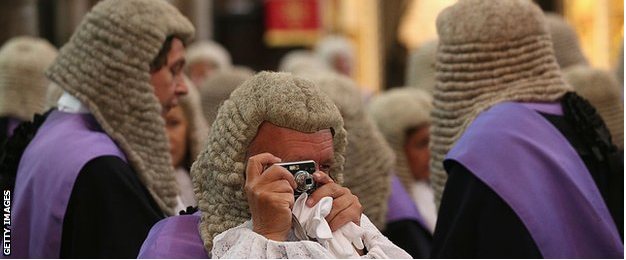
It is today taught in legal training that it was held in Bradford v Borders (1941) that the maker of a false statement must have intended for the claimant to have relied upon the statement if a tort is to be established. Moreover, the main difference between suing in deceit and in negligence was addressed by reference to the caps on remoteness of damages. In deceit, to mark the law’s disapproval of fraud, the defendant (in Elsy’s case the building society) is liable for all losses flowing directly from the tort, whether they were foreseeable or not.
But, Maugham’s definition also establishes that a common law action of deceit requires a representation of fact (her expectation that the home she was paying a mortgage on was sound) made by words, or conduct – but not silence or omission – made with a knowledge that it is wilfully false and with the intention that it should be acted upon so as to result in damage sustained by acting on a false statement. In other words, that it was necessary all along in English law to prove that Bradford Third knew that they were funding an unsound home. Effectively, the Borders’ claim that Bradford had “wilfully and fraudulently misled” them, was ruled by the House of Lords as something that could virtually never be established in the business of mortgage lending.
Elsy did not ultimately fail in her campaign, as some have suggested, but the British establishment did simply changed the rules to favour themselves. Even so, the business of selling homes that enabled the appearance of damp on walls and ceilings, cracked masonry, warped window- and door-frames, leaking roofs, beetles in the woodwork, and the shrinking floorboards, which issued electric shocks from defective wiring could never again happen.
Sources: Time Magazine July 31st 1939; `Where the Other Half Lives: lower income housing in a neo-liberal world’ Edited by Sarah Glynn, Pluto Press; Thanks to Michael Walker for references from the Communist Party pamphlet `Battle for Homes’ by Ted Bramley; Daily Telegraph, 25th July 2001; Bradford Third Equitable Benefit Building Society v Borders [1941], English Law Reports 205, 211A; The Times March 20th 1939.”
The article states that,
“As many as 70,000 families were on rent or mortgage strike at one point.”
which is a sizeable number. At last count there were over 11 million void mortgages under the auspices of the Crown (via its velvet gloved partners in crime known as Her Majesty’s Land Registry). The further we take it into the same’s Courts of Injustice, the more the system relies on its high placed masters of double-speak and lies, the Rabbinical high priests who preside in the theatres of tyranny to deny the ‘Goyim’ their equitable and lawful remedies.
In the whole of 2009, there was not a single victory for a mortgagor who took on his bogus lender in the courts and RM was just one of those. The court is the ultimate casino-house-of-religion and the fact that the banksters have their inside agent placed in the fictitious house of parliament in the shape of the ‘Remembrancer‘
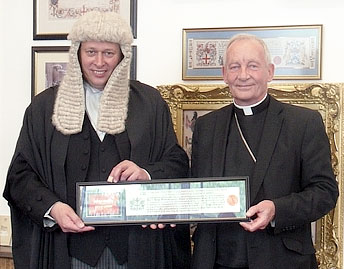
should demonstrate to all those with a capacity for clear thinking just who and what is the real power at work … Couple all this with the distinct possibility the Bank of England is the ultimate holder of all those securitised mortgage notes and we are left with the conclusion that we are living under a tyranny. A tyranny of control that will never provide the people with what is lawfully theirs ~ in the simplest of terms, all loan agreements without the signatures of all parties are void. The courts and judges know this, the people know and the Banksters are acutely aware of this fact too. All mortgages are therefore unlawful. What could be simpler? And yet, the attention spans of the population at large seem too short to hold this thought and the fear that’s been implanted in them often wins out in the form of inaction…
The system comes down heavy on those who challenge it and resorts to force in the last resort. The people, dumbed down through vaccinations, legal drugs, de-education programming (school), chemical assaults on the brain through the air, food and water and afraid to take what they regard as a ‘risk’ with the roof over their heads, shrug their shoulders and drag themselves out to ‘earn’ more of the elusive credit points to pay off a loan that does not exist…
RM has been challenging the Banksters over #TGBMS for seven years now. In that time, one had expected more and more people to come on board to the point where millions would be challenging the banksters and refusing to pay them moneys that cannot and will never be verified. He had, naively, expected a moment to arrive when the numbers swelled to such an extent that the system could not enforce its bogus orders and, as has happened, bailiffs would fuck off and take the bovine police with them. Without the duped police, this game would have been over long ago… The armed forces and police are referred to as “Our dogs” by the hidden Luciferian sorcerers, the controllers for whom they willingly commit crimes against the people the ruling classes are so afraid of.
Ultimately, the power lies with the people.
But how do we effect a change in the way the Borders did? A mortgage strike of 70 000 mortgagors refusing to pay the banksters would be as massive now as it was then. Couple that with a Grand Jury of the people and we would soon be able to bring the whole house of cards down, the criminal injustice system with it.
So, any suggestions as to how we might begin to organise a mass mortgage strike across these green lands would be welcome.
Elsy Border went out and spoke to crowds of people at public events ~ word spread by way of mouth and people got organised ~ is it not the case that now with the internet we have a greater capacity to reach more people? Would that work now, with speakers and meetings organised in communities around the country? Is it now the time to begin such a campaign?
It has long been established that a man’s home is his castle (Semayne Case) and that no man has the right to enter it without his expressed permission.
What would be the outcome if people started – en masse, in their thousands – to withhold their monthly payments, even if only for two months at a time? How would the courts deal with such a scenario whereby they were flooded with such huge numbers of fraudulent possession claims?
Do we not have the power, individually and together to affect such a change whereby the people take back full ownership of their land and homes for the benefit of all, not the least the future generations who, as things currently stand, face lifetimes of indentured servitude just to keep a roof over their heads?
Of course we do.
Further reading


